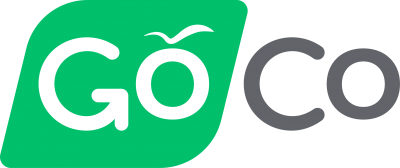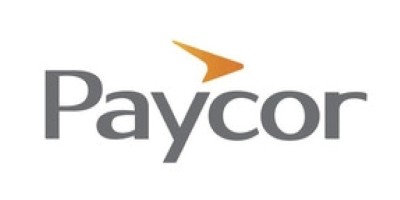Job posts are more than listings on a third-party website. They’re advertisements that communicate the value of employment at your company, and the primary medium through which new candidates enter the recruiting process.
Because job posts carry such importance, each and every one needs to be carefully crafted. But if you’re recruiting for a high-growth company, you probably struggle with scale.
How do you produce a consistent volume of posts while maintaining high quality? Use a job posting template.
Templates are excellent for scaling content production, because they adhere to the same process every time. The following five steps will help you create a job posting template that not only reduces your workload, but also brings in more qualified candidates.
1. Define requirements and responsibilities
It may sound simple, but this first section is where many job postings go wrong. To make your template successful, eliminate unnecessary information on responsibilities and requirements.
For example, is “5 years of experience” truly required, or is that just an arbitrary number? Is a postgraduate degree necessary? Only list what the role really requires.
The same goes for responsibilities. Isolate the most important, and leave out the superfluous information like who the candidate will report to and so on. Instead, explain what the day-to-day experience looks like.
2. Research your keywords
Studies have shown that 71 percent of Google searches end with a click on the first page. The top five results on the first page own 67 percent of all clicks.
Position is important, so each time you build a new listing, you need to do some research. The best method is to “spy.” Enter two or three phrases related to your job posting and see what your competition is doing.
This type of research also analyzes what your audience is looking for. The more popular the keyword (i.e. the higher number of listings), the more interest from your audience.
Once you know what’s ranking well, you’ll know what keywords to include throughout your post, and how to write the post title. Mold the title for the job posting based on keywords, rather than what your company calls the title.
If your organization uses an uncommon title and you use it as your headline, your post won’t rank well, and candidates probably won’t understand what it means.
3. Write the content
The most difficult part of developing your template will be writing the content, but getting a good formula down will save you a ton of time later.
First and foremost, always consider length. The ideal post is between 400 and 800 words long, so you should prioritize brevity.
Second, don’t make the content read as though your ideal candidate were a robot. This listing is an opportunity to showcase the culture of your organization, so add some personality to your copy.
If you need some help finding the right tone, send the post to your marketing team for review.
Finally, include the perks and benefits your company offers employees. Along with a welcoming company culture, a strong benefits package can be just as persuasive as a high salary.
4. Format your post
People don’t read on the internet that often — at least, they don’t really read.
Research shows that people scan. In 2008, Jakob Nielsen found that less than 20 percent of text content is actually read on a webpage. That means the format of the content in your job listing plays a huge role in how candidates respond to it.
Using sub-headers is key. For each new section, be sure to use clear copy and a larger font size to break up the content and make it scannable.
Including a video or an image is another option for increasing the “scannability” of your post, though the viability of this tactic depends on where you post your publishing.
5. Provide a clear call to action
Your template should end with a clear, obvious call to action. Without that, all your hard work to this point won’t mean much.
You need to tell the candidates where to go after they’ve read the job posting and decided to apply.
The more compelling you can make this link, the better. Blue, hyperlinked text alone is not optimal, but if it’s the only way you can format the link, put in a prominent area.

Lyft has their call to action at the top and bottom of their job post. It’s also a huge, pink button.
Test and Optimize
Once you complete your template, make sure you test its performance. You’ll likely need the analytics capabilities of a modern HR platform to record and decipher the appropriate data; this is a critical investment for recruiters.
Why test and analyze? Because it’s rare that the first version of something is the best version.
Furthermore, the recruiting metrics these systems record can be used to optimize your job posting template, which will lead to better conversions, and ultimately, a better return on investment for your company.
For example, if your click-through rate is low, you probably need to emphasize the CTA more. If your conversion rate into viable candidates is low, you may need to articulate the requirements more clearly.
* * *
Even with a detailed process, it takes time to perfect your template. Stay patient, and look for areas to improve based on your data. The return is well worth the investment.
The process above — adjusted for your individual hiring goals — will yield a template with all the elements necessary to attract qualified candidates.
Top Human Resources Software Recommendations
1 GoCo
Elevate your HR with a modern, easy-to-use HRIS designed for small businesses. GoCo is a secure, compliant hub for sending, digitally signing, and organizing your sensitive HR documents and data. Manage records, performance, time off, onboarding, benefits, and more – all in one place. With the best support in the industry, every GoCo customer is assigned a dedicated Customer Success Team that is readily available to provide guidance and ensure a smooth and reliable HRIS experience.
2 Paycor
Paycor’s HR software modernizes every aspect of people management, which saves leaders time and gives them the powerful analytics they need to build winning teams. Paycor provides a full suite of HCM solutions with a single source of truth for employee data, so users never have to switch platforms, log-in to multiple systems, re-key data or open multiple spreadsheets. Everyday processes become simplified, allowing organizations to focus on their most important work.
3 TalentHR
TalentHR is a fresh take on HRIS, an all-in-one tool built for HR success. It’s fully customizable and features time-off tracking, custom fields, employee onboarding, performance reviews, and job applicant tracking (ATS) that’ll alleviate all your HR analytics worries. Leave complex HR tools behind and focus on what matters most, your people. No IT skills required, all at a reasonable price. TalentHR is a product of Epignosis, the company that 11,000+ businesses trust for their HR and L&D needs.





